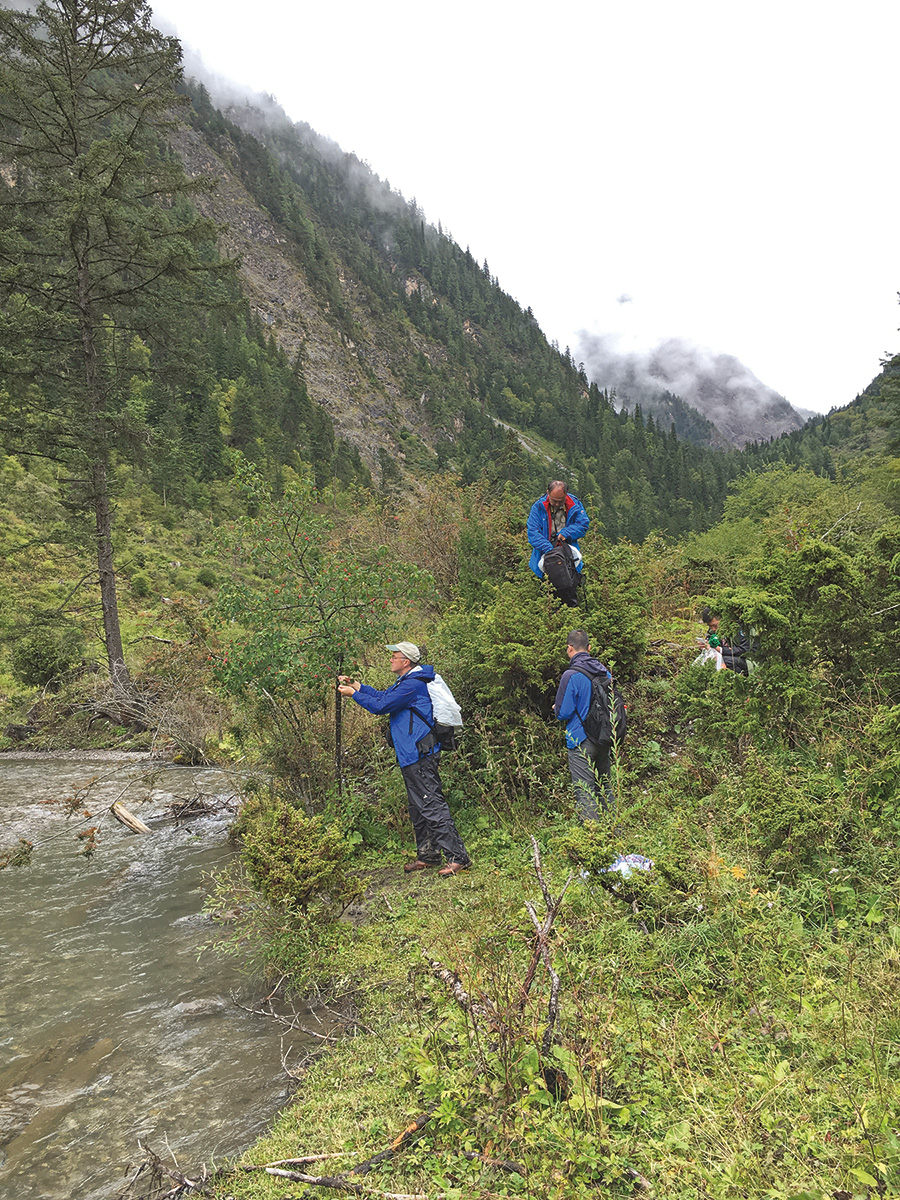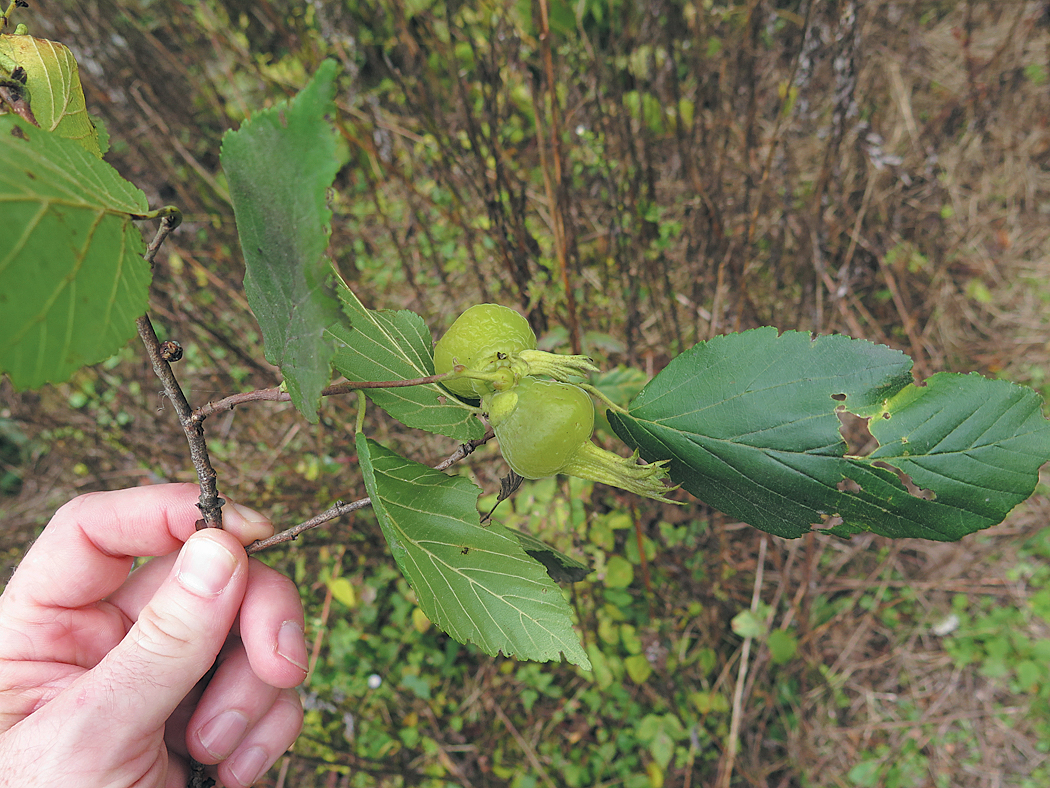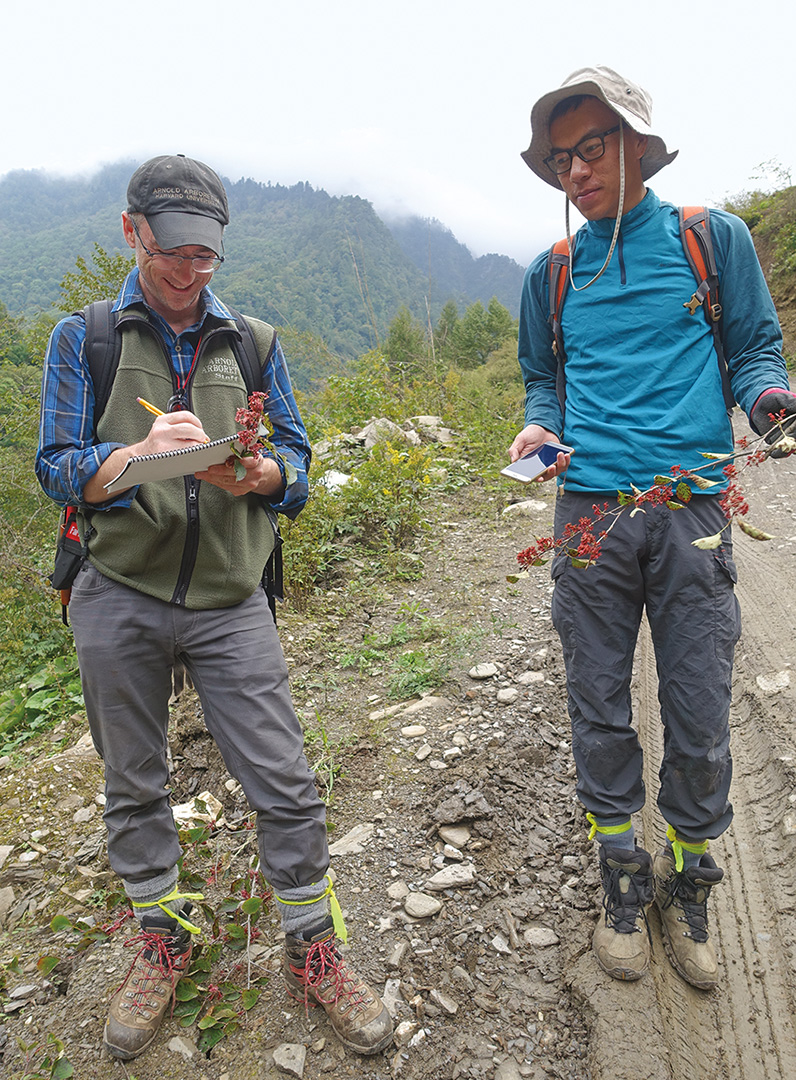
I recall my first visit to the US National Arboretum in November of 2001. I was a Putnam Fellow working with Peter Del Tredici (then Director of Living Collections and now Senior Research Scientist Emeritus), and we were attending the annual meeting of the North America-China Plant Exploration Consortium (NACPEC). NACPEC is a loose confederation of North American public gardens (and one US germplasm repository) engaged in collaborative plant collecting in China. As a Putnam Fellow, I was working on a retrospective case study of the celebrated 1980 Sino-American Botanical Expedition (SABE), so I did my best to contribute to the discussions. However, for the most part I did a great deal of listening and observing, for a cadre of plant explorers surrounded me, each a legend in their own time and rich with experiences. I took many notes. As I look back some 17 years later, I am humbled to lead the exploration efforts for the Arnold Arboretum, and to have been an ardent participant in NACPEC. That meeting in Washington, DC, was a poignant one.
Established over 25 years ago, NACPEC came together following the success of the initial 1980 and subsequent SABE trips to China, which illustrated that there was still a great deal of plant collecting left to do in China. In the mid- to late-1980s, a number of successful collecting trips to South Korea comprising participants from both Korean and US gardens further illustrated the value of a planned, multi-institutional, collaborative approach. With this in mind, staff members from the original founding NACPEC institutions (US National Arboretum, the Morris Arboretum of the University of Pennsylvania, and the Holden Arboretum) made an introductory trip to China in 1991 to visit botanical gardens and survey interest in such a venture. Indeed, abounding interest was expressed on both sides of the Pacific, and additional institutions—including the Arnold Arboretum—were asked to join the consortium. The inaugural expedition took place in 1993 in northeastern China.
The goal of NACPEC is to explore China’s floristic diversity to make well-documented collections of plant species to serve conservation, research, and horticulture. These expeditions, conducted jointly with Chinese gardens and university scientists, value the exchange of knowledge as much as culture. A number of renowned institutions in China have teamed up with NACPEC on these excursions, including the Heilongjiang Academy of Forestry, Nanjing Botanical Garden, and Beijing Botanical Garden. Since that first expedition nearly 25 years ago, to the sixteenth that took place last September, these expeditions have yielded nearly 1,600 separate collections of over 850 plant taxa. Explorers have traveled throughout China, although the Qinling Mountains and nearby ranges around southern Shaanxi have been a popular destination due to the diversity of winter-hardy species idealized by most NACPEC members. To date, the Arnold Arboretum has sent participants on six of these expeditions, and received germplasm from all of them.
NACPEC’s influence on the Arboretum’s collections has been transformational. Of our living, wild-collected accessions, 27% hail from China, including those collected a century ago by Ernest Henry Wilson to those collected just last year. Among those of wild Chinese provenance, 28% carry NACPEC’s fingerprints. In other words, over a quarter of our Chinese accessions (more than 175 taxa) derive from NACPEC collections, each with a compelling story or two or three. One that illustrates the value of deliberative and resolute collecting is Chinese hemlock (Tsuga chinensis), collected 18 different times on NACPEC expeditions across its native range. Over 150 T. chinensis plants collected by NACPEC grow in member gardens, 62 right here at the Arboretum—perhaps not surprisingly, due to hemlock being one of our six accredited national collections with the Plant Collections Network. With the additional collection we made in 2017, new material thrives in the pipeline, yielding a diverse pool of trees to collectively grow, study, and evaluate, particularly in light of the plight of our native hemlocks due to the hemlock wooly adelgid (T. chinensis is resistant to the insect pest).

Another winner is the paperbark filbert (Corylus fargesii), collected initially in 1996. The Arboretum accessioned four plants from this collection, each appreciated and admired for its attractive flaky bark, rapid growth rate, and uniform, pyramidal habit. The species was collected two more times by NACPEC, with almost 70 specimens now growing among our collective gardens. We made the most recent collection in 2015 while on the hunt for another paperbark: the beautiful but rare paperbark maple (Acer griseum). This represents another success story for NACPEC. Ernest Henry Wilson made the first two introductions of the species to cultivation (in 1901 and 1907). The third arrived through the 1994 NACPEC expedition to Hubei Province, the first to include the Arboretum. During the 2015 expedition, we visited most of the extant populations of the species to collect specimens for subsequent DNA analysis. We also made two seed collections—one from a wild plant, one from a botanical garden nursery. Successful propagation of this material gives NACPEC credit for sourcing half of the wild material in cultivation of this botanically rare yet horticulturally exceptional species. Countless more stories will be told about these and other species as the future unfolds.

Why has NACPEC succeeded, with incredible staying power, after some 27 years? For starters, the institutions—mostly arboreta—share similar values not only regarding what is collected and why collecting is important, but also how collections are made. We share the commitment to vigorously document each seed collection with detailed notes and observations, photographs, and voucher herbarium specimens (data that increase the plant’s value to science and conservation). Once brought back to North America, these germplasm collections are shared among the member institutions. Distributing the germplasm increases the chances of successful cultivation for a given collection. It also allows the Arboretum or any other NACPEC institution to reacquire a collection that failed to germinate or perished after planting simply by requesting propagation material from another garden. An annual inventory of all NACPEC material growing among our collective institutions provides the framework for these exchanges. This rich dataset not only makes it easier to share the information of who grows what, but also allows the better estimation of plant performance of lesser known and grown species in varying climates (particularly the assessment of cold hardiness). Similarly, with an expanded number of curators and scholars monitoring the same plants in different collections, they are likely to notice other interesting things, including possible misidentifications from the field.
Several years ago, the Arboretum’s Horticultural Library and Archives became the official repository of the NACPEC archives, documenting more than 20 years of exploration, discovery, and sharing. Head of the Archives and Library Lisa Pearson and her team have been receiving documents from various NACPEC institutions, particularly those important foundational papers and reports from the early days. Also, the role of coordinator of NACPEC has recently transferred from the Morris Arboretum’s Tony Aiello (who held the job for 18 years) to Andrew Gapinski, Manager of Horticulture at the Arnold Arboretum, who joined me and our colleagues in Sichuan last fall for his first NACPEC expedition. With our storied history of plant collecting in Asia and these various roles supporting the important work of NACPEC, no doubt our participation will continue to resonate both here and in China.
This article first appeared in the Spring/Summer 2018 issue of Silva. Become a member of the Arnold Arboretum to receive Silva and other benefits. See a special issue of Arnoldia honoring the twentieth anniversary of NACPEC here.
